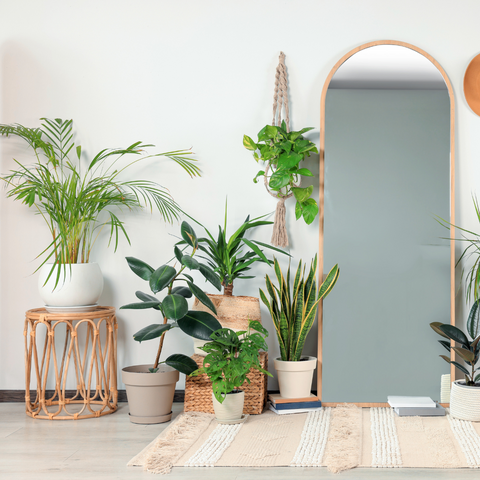As autumn settles in and the summer sun takes a backseat, it's time to usher your beloved houseplants back indoors. With the change in seasons comes a shift in care requirements for your indoor green companions. Here's a step-by-step guide on how to repurpose your fall plant care routine:
1. Bring Houseplants Back Indoors
Bid farewell to the warm summer nights as you prepare to bring your outdoor summer escape indoors. Move before temperatures drop below 55°F (12.5°C) at night, as most houseplants are not cold-tolerant. However, before the grand homecoming, perform a thorough inspection. Your plants may have picked up some unwelcome passengers during their outdoor vacation. Please shower them with a garden hose, let them dry, and then spray their leaves with a diluted neem oil solution to thwart potential pests. Remember, if a plant didn't make it through the season, it's an opportunity to explore new additions to your indoor garden.
2. Keep Light Levels Up
With the fall season comes shorter days and shifting angles of sunlight. It's crucial to monitor the light your plants receive. Some may need to be relocated to ensure they get a similar amount of the sun to what they enjoyed in the warmer months. Consider rearranging your indoor jungle to maximize light exposure. Rotate your plants weekly to ensure even growth and prevent them from leaning toward the light source. If natural light is scarce, especially during the colder months, don't hesitate to introduce artificial grow lights to maintain your plants' vitality.
3. Water Less Often
As the days grow shorter and more relaxed, your houseplants will require less water. They will enter a dormant or semi-dormant state with slower growth rates and reduced light during winter. Adjust your watering schedule accordingly, and always check the moisture level of the potting mix before watering. For instance, a succulent snake plant might only need a drink every six weeks in the fall, compared to every three weeks in the summer. Avoid overwatering at all costs, as it can lead to root rot.
4. Increase Humidity Levels
Indoor air becomes drier during the fall and winter, especially when heating systems run. Consider investing in a humidifier to create a more favorable environment for your tropical houseplants. Not only will it benefit your plants, but it's also good for your skin and the air you breathe. Alternatively, enhance humidity by grouping your plants, using pebble trays and glass domes, or double-potting them. Avoid placing your plants near radiators or in drafty areas, as extreme temperature fluctuations can stress them out.
5. Forgo the Fertilizer
During the fall and winter, foliage growth slows down significantly, making it unnecessary to fertilize your plants. Save the feeding for spring when the growing season kicks off again. Focus on providing your houseplants with essential light and water to sustain them through the winter months.
6. Expect Foliage Dieback
As you move your plants indoors, don't be alarmed if they start shedding leaves. This is a natural response to lower light levels indoors. Whether your plants spent the summer outside or remained indoors, foliage dieback can occur due to reduced energy from less light. You can assist your plants by gently removing mature leaves that are on the decline.
7. Repot Overgrown Plants
If your houseplants enjoyed a growth spurt during the spring and summer, they may be cramped in their pots. Fall is an ideal time to consider repotting them into slightly larger containers. Consult our Repotting Guide for instructions on assessing whether your plant needs a new home and how to complete the process.
As you adapt your houseplant care routine to the changing season, remember that your plants rely on your attention and care. With these tips, you'll keep your indoor garden thriving and create a cozy and inviting atmosphere throughout the fall and winter.





Comments (0)
There are no comments for this article. Be the first one to leave a message!